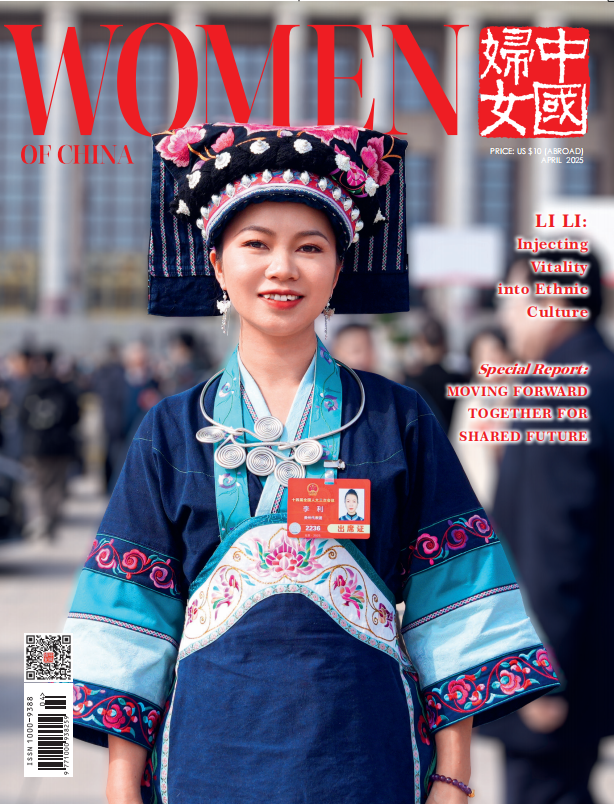Influential Vlogger Helps Traditional Chinese Culture Flourish
 |
| sreenshot of a Xinhua News video |
China's popular social-media platforms, including Weibo and Douyin, documented the impressive return of a famous Chinese vlogger, Li Ziqi, on November 12, 2024. That day, Li posted two videos, which showed how she built a shed into a woodland cloakroom, and how she made wardrobe doors — decorated with carved-lacquerware patterns — for her grandmother, respectively.
But why were the posts so memorable? It had been 1,217 days (from July 14, 2021) since Li, a prominent and hugely popular Chinese vlogger, posted a video online. Li's followers, including many from overseas, have praised her videos for showing the amazingly picturesque, and simple, yet elegant, lifestyle in China's countryside.
What was Li doing during the three years she was "absent" from the Internet? She explained her absence in an exclusive interview with Xinhua News Agency shortly after she resumed vlogging. She also shared her insights into the inheritance of Chinese intangible cultural heritage.
During the past three years, Li visited, virtually, more than 100 inheritors of intangible-cultural-heritage techniques, and people working in cultural-affairs-related fields, from across China. Li spent a lot of time interacting with them and listening to their stories.
For example, she detailed her communications with Wang Zhenxing, an inheritor of the blue-calico-printing and -dyeing craft, which was developed in Nantong, a city in East China's Jiangsu Province.
"Wang was 80 when I visited him, in 2018. At that time, his three children were learning the cloth-dyeing techniques from him. When I revisited him (in 2024), he was very happy and proud that his granddaughter had joined his family crew too, by creating fashionable designs for the craft to make it appealing to younger generations," Li said. This, she added, was indeed a way of practicing "innovative development" of traditional Chinese culture.
Rapid development of the Internet has greatly facilitated communications among people, all round the world, Li says. The increasing popularity of short videos, and the broad adoption of sci-tech skills, such as artificial intelligence, have resulted in more people sharing and exchanging aspects of various cultures.
"I once read a metaphor, which compared our traditional culture to an elderly person. Now, with support from both craftmakers and social-media workers, I want to do my part to help the elderly (representing traditional Chinese culture) move forward with the progress of the era," Li says.
Since her return online, Li has launched an intangible-cultural-heritage-workshop program in Chengdu, capital of Southwest China's Sichuan Province. Through this platform, she hopes to build a bridge between inheritors and social-media workers, like vloggers.
"Inheritors can teach vloggers the intangible-cultural-heritage techniques they have grasped, and help ensure the techniques are promoted to the public properly. At the same time, vloggers can show inheritors how to spread their techniques by livestreaming and shooting short videos. Contemporary designers can also join in to provide a more creative presentation of the time-honored techniques," Li says.
(Women of China English Monthly January 2025)
Editor: Wang Shasha
Please understand that womenofchina.cn,a non-profit, information-communication website, cannot reach every writer before using articles and images. For copyright issues, please contact us by emailing: website@womenofchina.cn. The articles published and opinions expressed on this website represent the opinions of writers and are not necessarily shared by womenofchina.cn.








.jpg)

 WeChat
WeChat Weibo
Weibo 京公网安备 11010102004314号
京公网安备 11010102004314号